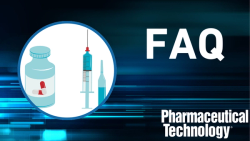
OR WAIT null SECS
- About Us
- Advertise
- Contact Us
- Editorial Info
- Editorial Advisory Board
- Do Not Sell My Personal Information
- Privacy Policy
- Terms and Conditions
© 2025 MJH Life Sciences™ , Pharmaceutical Technology - Pharma News and Development Insights. All rights reserved.
Avoiding Negative Drug–Device Interactions
Considering the potential interaction of a drug with the delivery device early on in in development is integral to achieving the best combination.
When ensuring effective drug delivery, developers must not consider the drug and the delivery vehicle completely separately. Formulation ingredients have the potential to interact with the delivery device, such as an autoinjector, and potentially negatively impact the ability for the device to deliver the required dose as expected.
To learn more about the potential issues that may arise from interactions between drug formulation ingredients and delivery devices, Pharmaceutical Technology spoke with Fran DeGrazio, chief scientific officer, Strategy & Science Integration, West Pharmaceutical Services.
Potential impact
PharmTech: How can drug components, excipients, and/or combinations of these ingredients impact delivery systems?
DeGrazio (West): Over the past several years, there have been multiple cases of challenges with autoinjector function over time. An example of one of these challenges is extrusion variability, which can lead to increasing delivery times. Extrusion is the force required to maintain plunger movement once it starts down the syringe barrel. The regulatory expectation of understanding essential performance requirements (EPRs), such as delivery time and delivery volume, means that EPRs must be evaluated during the development process. This expectation has led multiple pharmaceutical companies to identify problems with function that can occur with certain combinations of drug formulations and drug solutions. The issues arise due to the prefilled syringe system in the autoinjector, not the autoinjector itself. The autoinjector is consistent in applied force to move the plunger down the glass barrel of the syringe; it cannot adapt to variability in the barrel of any kind. The need for consistency means that the function of the syringe cannot vary. The drug–device combination product must deliver consistently over shelf life to assure safe and effective patient use.
Understanding is key
PharmTech: Why should formulators and developers take these potential interactions into consideration? What sort of complications may arise from these interactions further along the development cycle and ultimately for the end users, for example?
DeGrazio (West): It is expected that drug formulators ensure the chemical and physical stability of a drug product. It is also expected that the EPRs of the drug–device combination product are met. This means developing a product that performs as required for the drug/patient application. If drug formulators do not understand the final delivery format and develop a drug product only with consideration of its efficacy, they may find variability with EPRs as they move to later stages of development. If a complication is not identified until the Phase III stability program, this delay could force the drug formulator to conduct a root cause investigation, which, in turn, may require reformulation of the drug product or switching to another prefilled syringe system/autoinjector combination product. This type of complication being discovered late in development would extend the development timeline substantially.
Best practices
PharmTech: Are there best practices that you would advise for formulators and developers to employ to avoid the potential issues that may arise from ingredient/excipient interaction with delivery systems and ensure consistency with the formulated product?
DeGrazio (West): We have determined a best practice to be the evaluation of the drug product vehicle design space, which considers various excipient combinations with the chosen prefilled syringe system. To implement this best practice, we have designed a program that models the potential interactions among the drug solutions and the prefillable system, and then confirms results through pertinent analytical testing. Employing this kind of program early in development provides clear direction on the best combination with which to move forward and provides the data to support the decision.
Article Details
Pharmaceutical Technology
Vol. 44, No. 4
April 2020
Page: 32
Citation
When referring to this article, please cite it as F. Thomas, “Avoiding Negative Drug–Device Interactions,” Pharmaceutical Technology 44 (3) 2020.

 Download Issue: Pharmaceutical Technology-04-02-2020
Download Issue: Pharmaceutical Technology-04-02-2020

